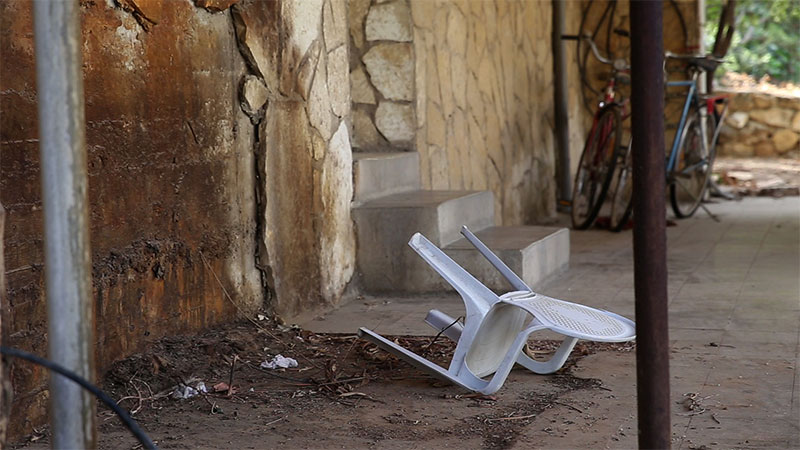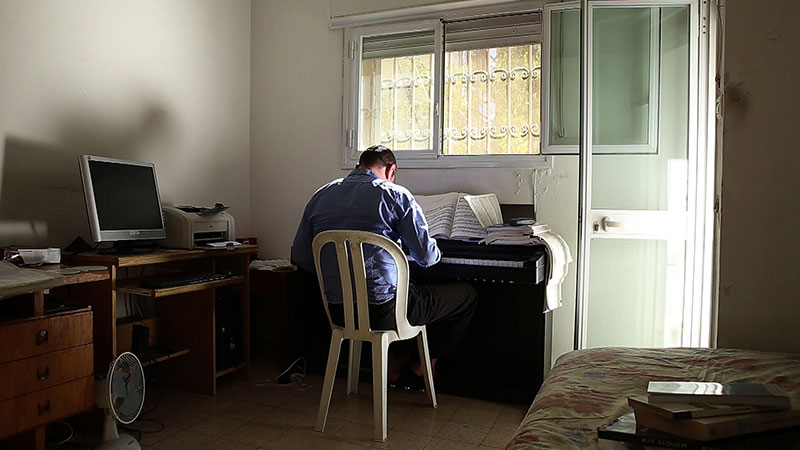Orginal title: The Other Side of Silence)
When Israel launched its war in Lebanon in June 1982, Prime Minister Menachem Begin described it as an act of self-defense. As he put it, he wanted to avoid another Treblinka for the Jewish people.
On the second night of battle, Israeli units conquered Beaufort, an old crusader castle in South Lebanon that had been an enemy stronghold. During the battle, six Israeli soldiers were killed. One of them was Guni, a young man from Jerusalem. Recently, he had finished his compulsory service and was on his way to a coast-to-coast trip in the US when he was called up for reserve duty in a commando unit.
Guni lived with his parents in an apartment building in Jerusalem, and his story is one of many about its residents, filmmaker Tirtza Even portrays in her latest documentary. She herself grew up in the building that housed nine families with more than twenty children but left for the US to study and got married there. Many years later she returns to dig into the undercurrents of the Jerusalem building where it turns out a significant number of the male residents have died prematurely and of unnatural reasons.

Haunted house
What follows is a fragmented assembly of portraits of the men gone, of the women mourning them, and it all becomes a mirror image to a society that is prey to the violence of its own defense mechanism, its land mines. Tirtza Even looks up the last remaining tenant still living in the building. He is a musician and composer, and he resides in the very apartment where she grew up.
That brings it all back. Her childhood in the early 1960s was harmonious. The building functioned like one big commune, a secluded world where everybody cared for each other. People never locked their doors and the kids entered all apartments without knocking.
Then everything was upended as if an earthquake had hit. It happened around 1967, the year of the war that changed the whole Middle East. Strange events took over and the building became a haunted house filled with fear and anxiety. On the surface, there was no connection to political events in the region, but when one man after another suffered death in strange circumstances, it seemed that all its residents were confronted with the brutal realities of the outside world.
when one man after another suffered death in strange circumstances, it seemed that all its residents were confronted with the brutal realities of the outside world.
Meir Harnik is killed in a motorbike accident. Tragedies like that happen, but when another man from the building gets murdered shortly after, people started to believe that there was a curse on the building. The murdered man was a literature scholar at the university. He had a keen interest in the Zionist poet Yosef Haim Brenner, killed by Arabs from Jaffa in 1921. The scholar was worried about the situation after 1967. He was sure it would lead to another disaster if Israel did not withdraw from the occupied territories, and there seems to be a clear connection when he iz murdered by two young Palestinians while walking in the Valley of the Cross, a serene piece of wooded land in the middle of Jerusalem.
All residents have respected professions; one is a psychiatrist and director of Eitanim, a mental asylum housed in a former Palestinian village, whose inhabitants fled in 1948. He was born in 1923 in Krakow. His whole family perished in the Holocaust, while he survived several concentration camps. Later in life, he was invited to Poland a few times but refused. At age 60 he went anyway, and afterward explained that it was too difficult. He got brain cancer and his daughter – a childhood friend of Tirtza Even – is sure there is a connection. There is a balance between forgetting and allowing yourself to live.
Mental asylum
The testimonials in the film are bolstered by visual experiments. There are pictures from The Great Rift Valley and The Dead Sea, a short distance from Jerusalem. That is the spot where two tectonic plates and, therefore, an earthquake zone. It is also the border with Jordan, secured with land mines that will blow up unexpectedly – like the deaths occurring in the Jerusalem building.

Menachem Begin’s words about Treblinka and self-defense echoes while the secluded life in the apartment building dissipates and turns into a picture of a society devastated by its own military aggression, a repression of the past and resulting loss of innocence.
At some point, the building’s musician plays one of his own compositions. He wrote the piece in 2004, during the Al Aqsa Intifada with all the bombings in Jerusalem. It is haunting, resembling Dante’s Inferno. «This whole country is like a mental asylum,» he says with a sad smile.






